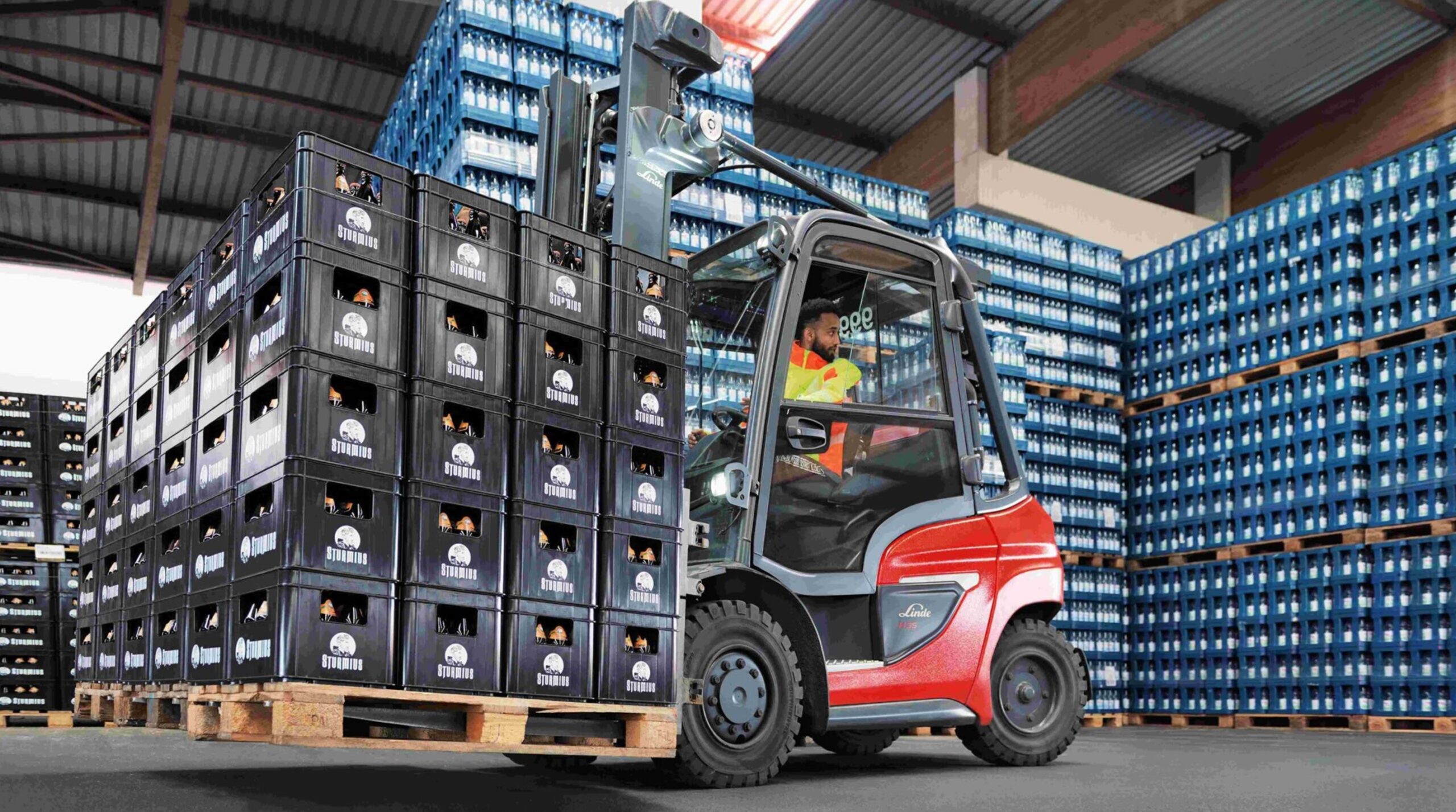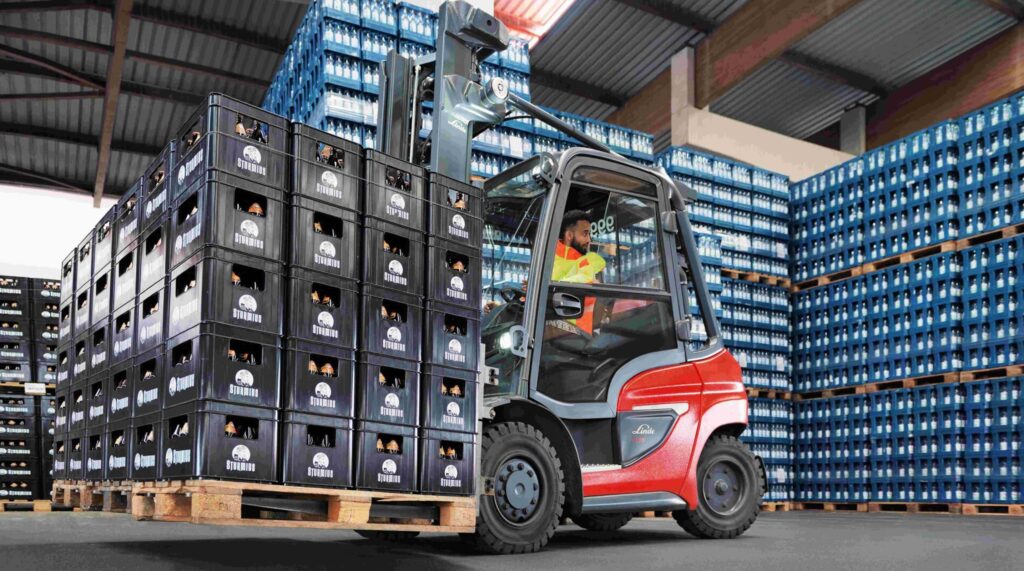Load Capacity and Net Capacity for Your Forklift
A forklift’s load capacity refers to the maximum weight it can safely lift and carry. This capacity is closely tied to the load center, which is the horizontal distance from the vertical face of the forks to the center of gravity of the load. Typically, this distance is around 24 inches. The load capacity can vary based on factors such as attachments, lifting heights, and other considerations. It’s crucial to ensure that loads are centered when lifting them to their maximum height or carrying them at their maximum capacity. The net capacity, often referred to as payload capacity, takes into account additional factors like attachments, mast style, and any other add-ons that may affect the forklift’s lifting capabilities. It represents the actual weight a forklift can safely handle under these conditions.
What’s the Maximum Weight Capacity of a Forklift?
Forklifts come in a range of capacities, typically ranging from 3,000 lbs. to approximately 70,000 lbs. However, the actual weight a forklift can lift depends on various factors, including the weight, size, and position of the load. Irregularly shaped or unbalanced loads, as well as improper fork placement, can lower the overall capacity. Many forklifts are equipped with attachments like clamps, multiple load handlers, rotators, and fork spreaders to meet unique operational needs or improve efficiency. These attachments can alter the load capacity, so it’s important to update the data plate to reflect the new specifications when installing them.
When it comes to loading a forklift, it’s crucial to consider other factors such as the maximum load moment, balance, and stability to ensure safe and efficient operations.
Determine the Right Capacity for Your Operational Needs
If you’re uncertain about the forklift capacity you need for your operation, contact Total Warehouse material handling dealership and prepare to answer these 4 questions.
How heavy is your general load?
What is the maximum height your load needs to be lifted to?
How wide is your largest possible load?
Will you require any attachments?
Critical Factors Affecting the Forklift Load Capacity
Determining a forklift’s maximum lift capacity requires careful consideration of multiple technical and operational variables. Safety and efficiency depend on understanding five key elements that directly impact a machine’s lifting performance:
Load Center Precision
Lift capacity hinges critically on load placement. The standard 2-foot load center from the forklift’s front determines how much weight can be safely transported. Misaligning the load significantly reduces the machine’s carrying potential, making precise positioning essential for optimal performance.
Equipment Dimensions and Design
Forklift size directly correlates with lifting capabilities. Larger machines generally support heavier loads, but operators must balance size with maneuverability. Bigger equipment increases lifting power while simultaneously raising risks of instability on uneven surfaces.
Lift Height
Lift height dramatically influences load capacity. As the load rises higher, the forklift’s stability decreases proportionally. Industry safety guidelines recommend maintaining loads as close to the ground as possible to maximize operational safety and lifting efficiency.
Attachment Modification
When you incorporate attachments that shift the load center, you must account for these changes to determine the revised capacity accurately. This adjustment can be made by dividing the new load center by the Maximum Load Moment. For example, switching from 48-inch forks to 60-inch forks, shifting the load center from 24 inches to 30 inches.
Calculate the new load capacity using the following formula: (Truck Capacity x Load Center) / (New Load Center) = Revised Capacity.
Machine Maintenance and Condition
Equipment integrity is paramount. Worn components like tires, forks, and internal mechanisms directly impact lifting performance. Regular maintenance ensures consistent lift capacity and prevents potential operational failures.
Forklift Derated Calculator
| Forklift Derate Calculator | |
|---|---|
| Rated Load Center (in.) | The original horizontal load center that is rated for your forklift. |
| New Load Center (in.) | This is typically the length from the mast to the center of the new load. |
| Rated Capacity (lbs) | The rated capacity for the height you are lifting the load to. |
| Derated Capacity | 0.00 lbs |
Guide to Using the Calculator

X = Load Center
Y = Effective Thickness
- Rated Load Center: This is the forklift’s rated horizontal load center, as specified on the forklift’s data card.
- New Load Center: The new horizontal load center, calculated by adding the effective thickness of any attachments to the original load center. It represents the distance from the mast to the center of the new load.
- Rated Capacity: The forklift’s lifting capacity at a given height, noted on the data card. Adjust this by subtracting any additional attachment weight not included in the original capacity rating.
Example:
Rated Load Center: 32 in.
New Load Center: 45 in.
Rated Capacity: 3000 lbs.
DeRated Capacity: 2133 lbs.

At Total Warehouse, we’ve helped countless businesses across the United States achieve lower maintenance, reduced costs, increased worker satisfaction, and increased economic sustainability by making the switch. Our team of highly knowledgeable experts can help you make the right decision for your business. Give us a call at 833-868-2500 or contact us online.





